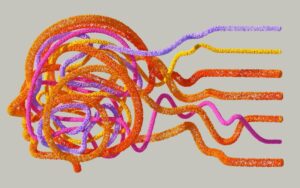
Art Clomera
Vice President, Operations
Cyber warfare does not do détente or cold wars. Federal agencies and their security partners are constantly in the crosshairs. In a threat environment akin to a ticking bomb, organizations unable to adapt their cybersecurity practices are exposed. After all, how can you protect what you can’t see?
Lack of asset visibility is a security nightmare. But a comprehensive Cybersecurity Asset Management program gives you the control you need to see all your assets, prioritize security efforts, and respond to incidents quickly.
Ethan Hawke leading a Mission: Impossible CSAM team might be pure fiction, but the potential consequences of neglecting CSAM for your organization and for national security are very real. That’s why we’re unpacking cybersecurity asset management this month.
What is Cybersecurity Asset Management (CSAM)?
Cybersecurity Asset Management (CSAM) is a strategic framework to protect an organization’s hardware, software, data, and network resources from cyber threats.
It is crucial in supporting Zero Trust Network architectures by providing comprehensive visibility and control over all assets within an organization’s digital ecosystem.
- Continuous Discovery: No hidden devices or users – CSAM finds them all.
- Real-Time Inventory: Always know what’s on your network.
- Smart Classification: Granular access control based on asset criticality.
- Vulnerability Tracking: Patch weaknesses before attackers exploit them.
- Policy Enforcement: Automated access control based on asset attributes and user roles.
- Anomaly Detection: Unusual activity = potential breach – CSAM flags it.
- Security Integration: Seamlessly connect CSAM to IAM for enhanced verification.
- Compliance Assurance: Secure assets meet access standards before entering your network.
Check out our blog on GRC tools for a deeper look at tools that integrate governance, risk, and compliance with cybersecurity.
What is a Cybersecurity Asset Management (CSAM) Application?
A CSAM cybersecurity application gives you a comprehensive, real-time view of all your organization’s digital assets. It empowers you to identify, assess, and prioritize critical infrastructure for protection.
A CSAM cybersecurity application also provides an end-to-end Assessment and Authorization (A&A), offering automated inventory, configuration, and vulnerability management capabilities. It should also support common controls, enhanced inheritance, and automated baselines, which are crucial for federal agencies managing complex IT environments and a proliferation of data.
Key features of a CSAM cybersecurity application:
- Automated Asset Discovery
- Centralized Asset Repository
- Real-time Inventory Updates
- Asset Classification and Categorization
- Vulnerability Assessment
- Compliance Monitoring and Reporting
- Integration with Security Tools
- Risk Assessment and Prioritization
- Lifecycle Management
- Customizable Dashboards and Reporting
Understanding Cyber Assets: A Quick Overview
What is a cyber asset?
Federal agencies utilize hardware, software, data, and associated services to fulfill their missions and ensure the integrity and security of their operations. A cyber asset is any resource within an agency’s digital ecosystem that requires protection. This includes:
- Hardware: Physical devices such as computers, servers, mobile devices, and IoT sensors
- Software: Applications, operating systems, firmware, and custom agency tools
- Data: Both stored and transmitted information, including classified documents and citizen data
- Associated services: Cloud services, APIs, and secure government networks
These assets form the foundation of an agency’s digital infrastructure and are critical to operating effectively and securely in today’s interconnected world.
Why is maintaining an accurate and up-to-date inventory of cyber assets crucial?
The sheer diversity and interconnectedness of federal cyber assets create unique challenges. Understanding their full digital footprint empowers agencies to:
- Implement appropriate security measures
- Ensure compliance with FISMA regulations
- Respond swiftly to evolving cyber threat
Beyond these core benefits, a comprehensive inventory offers additional advantages:
- Facilitates security audits
- Supports incident response
- Enables accurate reporting
- Improves resource allocation
Without a comprehensive inventory, agencies risk leaving systems vulnerable, struggling to respond to threats, and compromising national security.
How to accurately manage your cyber asset inventory
This far-reaching understanding of their digital landscape allows agencies to manage and protect their digital infrastructure, ensuring that no asset goes unaccounted for and potentially a weak link.
But total visibility over cybersecurity assets is more than this. It’s the foundation for implementing security measures, allocating resources efficiently, and making informed decisions about technology investments and risk management strategies.
Here are five key steps to accurately manage your cyber asset inventory:
1. Establish a centralized asset repository
Utilize a centralized system like a CSM application to track and manage your cyber asset inventory. Asset management cybersecurity applications provide automated inventory tracking, configuration management, and vulnerability management capabilities.
This centralized system will serve as a single source of truth for all your cyber assets, enabling comprehensive tracking, real-time updates, and seamless integration with other security tools. By consolidating your asset data in one secure location, you’ll gain unprecedented visibility into your entire IT landscape. That means more effective risk management, resource allocation, and compliance reporting across your federal agency.
2. Conduct regular inventory reconciliation and validation
Perform periodic reconciliation and validation of your cyber asset inventory at least once a year. This involves comparing inventory in systems like your CSAM application against external sources like the FISMA Master Inventory.
Regular validation helps ensure the inventory remains current, complete, and aligned with your agency’s actual IT environment. Any discrepancies or inaccuracies should be investigated and corrected ASAP.
3. Invest in automating ongoing inventory updates
Inventory management automation tools track configuration, software, and security posture changes. These tools can automatically categorize and tag assets based on pre-defined rules, simplifying complex IT management.
They also track asset lifespans, from purchase to retirement, and alert you about updates or approaching end-of-life. By correlating asset data with vulnerabilities, you gain real-time risk assessments that simplify your remediation priorities.
4. Document systems and boundaries thoroughly
Maintain documentation for all information systems, including clear definitions of system boundaries, components, and interfaces. Ensure each SSP provides a complete overview of the system’s security requirements, implemented controls, and planned enhancements or mitigations.
Document systems and boundaries thoroughly by creating and maintaining comprehensive records for all information systems within your federal agency. As always, regularly review and update your SSPs to reflect changes in the system environment, emerging threats, or new compliance requirements.
5. Implement strong access controls and monitoring
The final step includes establishing a robust identity and access management framework that enforces the principle of least privilege across all systems and data repositories.
This framework should include multi-factor authentication, role-based access controls, and automated processes for provisioning and de-provisioning user accounts.
It’s also essential to implement comprehensive logging and monitoring solutions that capture detailed information about user activities, system changes, and access attempts. These solutions enable real-time threat detection and facilitate forensic analysis during a security incident.
8 best practices for effective cybersecurity asset management
Implementing effective Cybersecurity Asset Management (CSAM) is essential for federal agencies to protect their information systems and data. By adopting best practices, agencies can enhance their cybersecurity posture, ensure compliance with FISMA requirements, and efficiently manage their digital assets.
Here are 8 best practices for implementing an effective CSAM strategy.
1. Comprehensive assessment & authorization management
A thorough assessment and authorization management approach is critical for maintaining a robust cybersecurity framework. Covering all aspects of the assessment and authorization lifecycle ensures comprehensive evaluation and continuous monitoring of systems.
Key Steps:
Full end-to-end management
Implement a framework that covers all aspects of the assessment and authorization lifecycle. This ensures thorough evaluation and authorization of systems and continuous tracking of Authorization to Operate (ATO) expirations for timely renewals.
Automation of processes
Streamline authorization and assessment processes in alignment with evolving OMB A-130 and FISMA requirements. This reduces manual workload and enhances accuracy, allowing for better resource and budget allocation.
2. Implement advanced controls and automation
Adopting advanced controls and automation can greatly reduce the complexity and workload associated with cybersecurity management. Utilizing inherited and hybrid controls, as well as automating key processes, can help ensure comprehensive security coverage and up-to-date compliance.
Key Steps:
Inheritance and hybrid controls
Utilize inherited and hybrid controls to minimize duplication and ensure comprehensive security coverage across different systems and environments.
Automation of SSP development
Implement tools to automate the creation and maintenance of System Security Plans (SSPs), ensuring they are always up-to-date.
POA&M management
Efficiently manage and track the progress of actions and milestones for addressing identified security weaknesses.
Automated NIST 800-53 control-set migration
Seamlessly transition to updated control sets as NIST standards evolve to ensure continued compliance.
3. Implement robust reporting and monitoring tools
Effective reporting and monitoring tools are crucial for maintaining visibility and control over your cybersecurity posture. Customizable dashboards, robust audit capabilities, and timely notifications can provide the actionable insights needed to address issues proactively.
Key Steps:
Customizable dashboards and reports
Develop tailored dashboards and reports to meet your specific needs, providing actionable insights and timely alerts.
Audit capability
Ensure thorough and reliable audit trails to facilitate both internal reviews and external regulatory audits.
4. Adopt a shared service model for efficiency
Utilizing a shared service model, which can provide significant cost and operational efficiencies, an agency can reduce the burden of maintaining and operating CSAM infrastructure while benefiting from a supportive community of cybersecurity experts.
Key Steps:
Hosting services
Leverage hosting services to reduce the burden of maintaining and operating CSAM infrastructure.
Non-profit pricing structure
This option benefits from a cost-effective pricing model focused on recovering costs rather than generating profit, making it financially viable.
5. Enhance integration with NIST SP 800-53
Aligning your CSAM processes with NIST SP 800-53 standards ensures compliance and enhances the effectiveness of your cybersecurity measures. Seamless integration and automated updates facilitate ongoing compliance and operational efficiency.
Key Steps:
Integration of NIST content
Incorporate NIST standards and guidelines into the CSAM processes to ensure comprehensive compliance.
Automated control-set migration
Seamlessly update control sets as NIST standards evolve, ensuring continued alignment with best practices.
6. Strengthen audit and account management controls
Robust audit and account management controls are essential for detecting and addressing potential security issues. Regularly reviewing audit logs and separating duties ensure system integrity and security.
Key Steps:
Regular review of audit logs
Conduct thorough reviews to detect and promptly address any suspicious activities.
Separation of duties
Implement strict separation of duties to review audit logs independently, preventing conflicts of interest and ensuring system integrity.
7. Document and update security plans
Accurate documentation and regular updates to security plans are crucial for reflecting the current security posture. Ensuring comprehensive records of Plans of Action and Milestones (POA&Ms) within System security plans (SSPs) enhances the effectiveness of your security management framework.
Key Steps:
Real-time updates to SSPs
Ensure SSPs are continuously updated with the latest information, reflecting the current security posture.
Comprehensive documentation of POA&Ms
Maintain detailed records of Plans of Action and Milestones to address identified security weaknesses, ensuring accurate reflection of security controls and remedial actions.
8. Provide continuous training and support
Continuous training and support are vital for maintaining high cybersecurity standards. Regular training sessions and comprehensive helpdesk support ensure users are proficient in CSAM and stay informed about the latest cybersecurity practices.
Key Steps:
Regular user training
Provide ongoing training opportunities through web-based and on-site sessions to ensure that users are proficient in using CSAM and know the latest cybersecurity practices.
In-House Helpdesk Support
Offer comprehensive support to address user issues and queries promptly and effectively.
By implementing these best practices, federal agencies can significantly enhance their cybersecurity posture, streamline compliance with FISMA requirements, and effectively protect their information systems and data.
Take Control of Your Federal Agency’s Cybersecurity Assets Today
Ready to transform your asset management and cybersecurity posture? IPKeys CLaaS® offers a powerful, integrated solution designed specifically for federal agencies. Don’t let outdated inventory practices compromise your compliance or security posture.
Act now to:
- Gain real-time visibility into all your IT assets
- Streamline lifecycle management
- Enhance your cybersecurity defenses
- Automate compliance with federal frameworks
Contact IPKeys for a personalized demo.
Common FAQs
As organizations grow and evolve their security programs, CSAM applications can keep pace. Cloud-based solutions offer scalability through flexible resource allocation and smooth integration with existing systems.
Modular architectures allow adding new features and functionalities, while robust APIs connect with a growing ecosystem of security tools and data sources.
Organizations can ensure compliance by:
- Identifying all applicable regulations: Understand which regulations govern your industry and asset types (e.g., FISMA, HIPAA).
- Developing and implementing clear policies and procedures: Establish guidelines for asset inventory, risk assessment, access controls, and reporting.
- Regular monitoring and auditing: Continuously monitor asset activity and conduct audits to address any gaps in compliance.
Managing legacy systems with CSAM can be tricky. Legacy systems might not map cleanly to the control sets defined in SP 800-53 and SP 800-53A, especially since SP 800-53A Revision 5 has yet to be finalized.
Additionally, converting the OSCAL control breakdown into a detailed tree structure to CSAM’s “Determine If Statements” structure might require manual effort and lead to inconsistencies.



